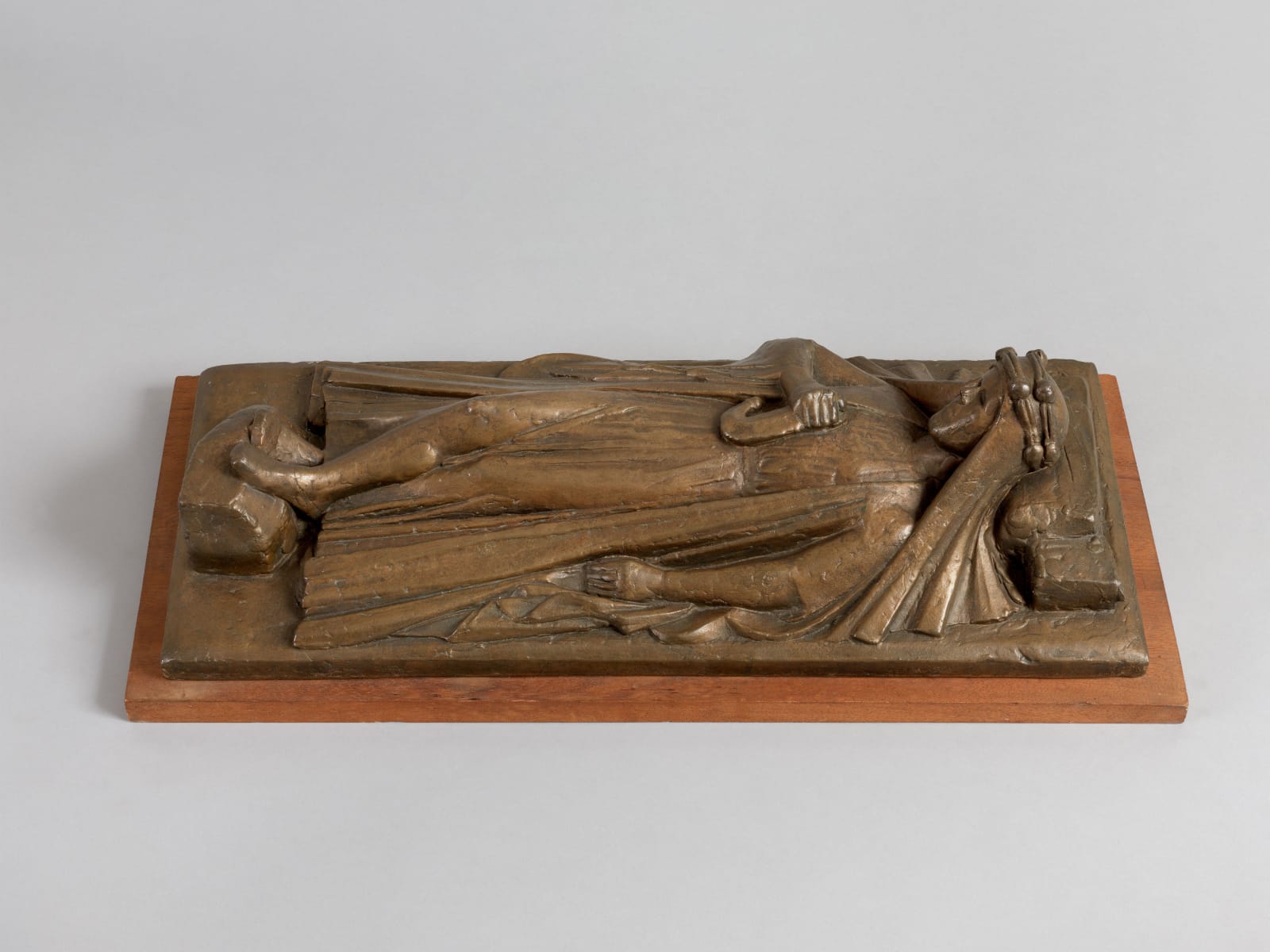Eric Kennington
Edition 1 of 9
13 x 21 x 52 cm
An archaeologist and military strategist, Colonel Thomas Edward Lawrence (dubbed ‘Lawrence of Arabia’) was famed for his involvement as the advisor to Bedouin forces during the Arab Revolt of the Ottoman Empire between 1916 and 1918.
Kennington was first introduced to Lawrence in 1920, after his exhibition of war drawings and plaster reliefs at the Alpine Club Gallery, London. Lawrence purchased two preparatory drawings for the 1920 plaster PBI (Poor Bloody Infantry) and on doing so, left his contact details for Kennington. Having admired Lawrence’s achievements, Kennington promptly made a visit and after brief conversation, agreed to accompany the Colonel on a trip to the Middle East to create a series of portraits of the Arabian men that Lawrence had fought beside. These illustrations accompanied Lawrence’s writing of his time in the British Army which developed into his autobiographical account Seven Pillars of Wisdom. This book was later adapted into the film Lawrence of Arabia in 1962. Lawrence remained in close contact with Kennington and in November 1926, modelled for a bronze bust dressed as an RAF soldier. While Kennington typically steered away from portrait busts, Lawrence hailed the work as ‘magnificent’ commenting on the complex character that Kennington was able to convey. One of the six casts is displayed as Lawrence’s memorial at London’s St Paul’s Cathedral crypt.
Kennington spent four years creating the principal memorial to Lawrence following his death in May 1936. A plasticine maquette of Lawrence’s tomb was initially created in the same year and this present sculpture is a bronze cast of the full-scale version carved in Portland Stone, which resides at St Martin’s Church, Dorset. In this effigy, Lawrence is adorned with luxurious Arabian robes and sandals in a direct nod to his experiences in the Middle East. Reminiscent of medieval statues and tombs, Kennington crosses Lawrence’s right leg over the left, historically symbolic of a knight on crusade, while his hand grasps a khanjar dagger gifted to him by King Feisal. Further personal imagery can be seen at the base of the sculpture where the figure’s feet rest gently on a fragment of stone, and emblem of the archaeological digs Lawrence took part in. Kennington’s absolute care and commitment towards this sculpture is undoubtedly a mark of the artist’s true respect for Lawrence and a clear symbol of their friendship.
